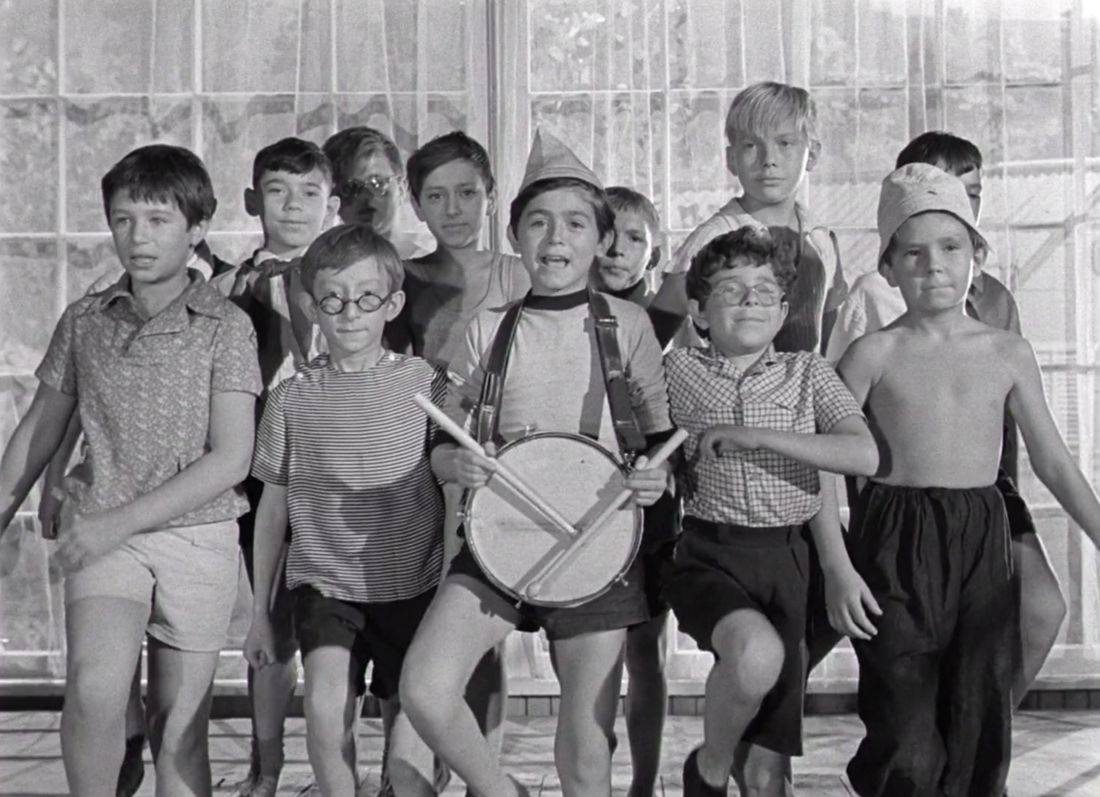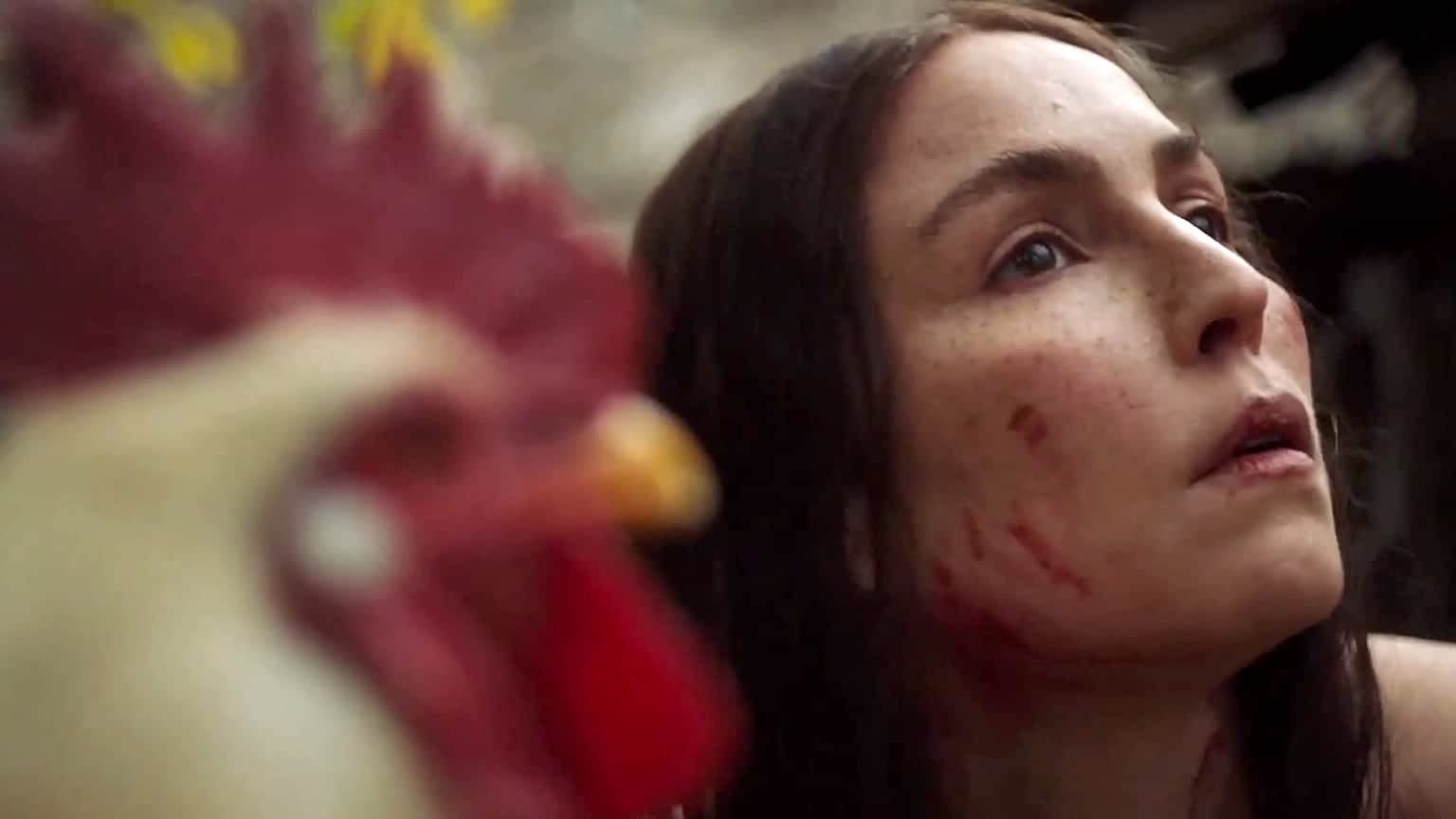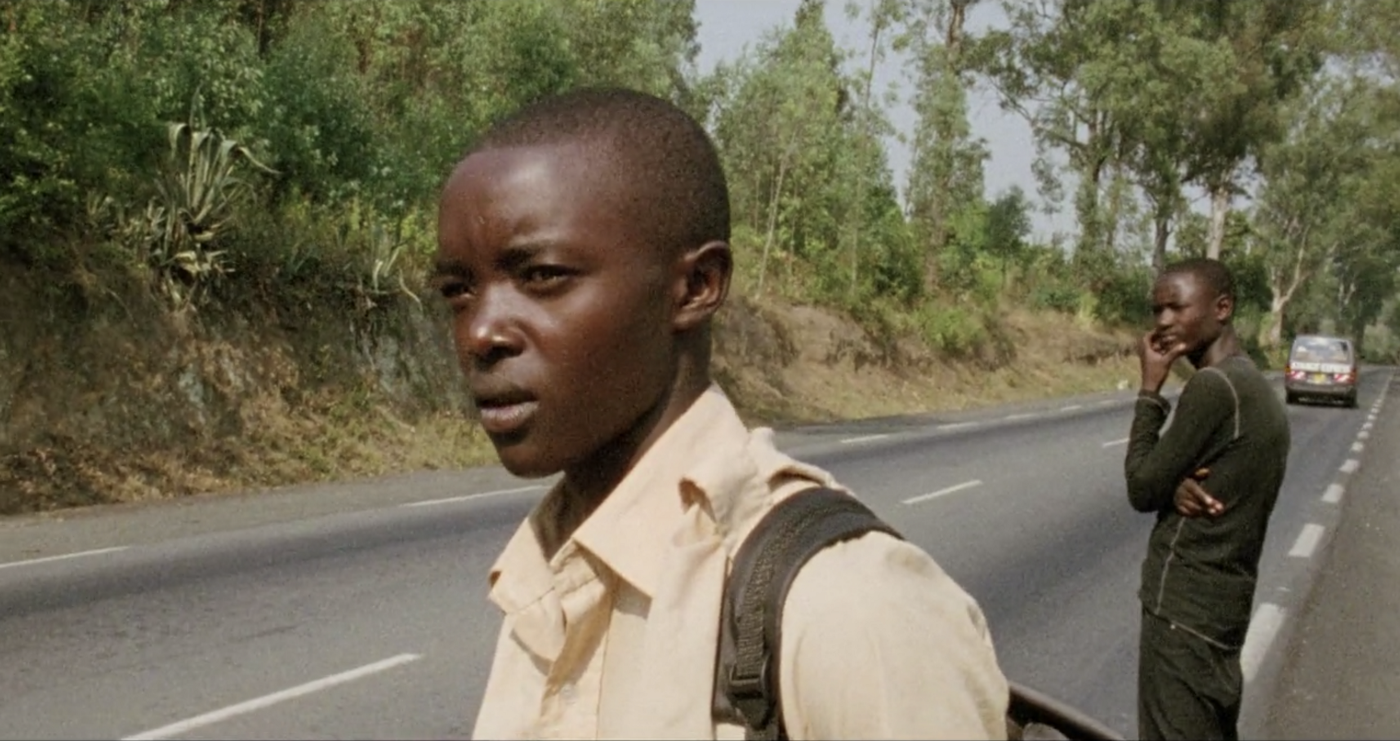
It's hard to pin down exactly why John And The Hole is such a disturbing film, but it has something to do with the main character John. He’s a gangly 11-year-old boy living in an upper-middle-class suburb somewhere in New England. As a character, he is inscrutable. He might have Asperger's or autism, or he might be a psychopath, but none of these labels truly fit. John defies easy categorization, which keeps the audience off balance and left to guess what his motivations are.
John seems incapable of empathy and he does not appear to have a conscience, but there is a strange innocence about him. He seems naive, like a small child, but has all the awkward and moody instability of a preteen. The film opens with John standing by his desk in a classroom while a teacher tries to talk to him.
Teacher: “John?"
John: “Yes?”
Teacher: “Stand up please.”
John: “Ok.”
Teacher: “What’s the square root of 225?”
John: “I don’t know.”
Teacher: "John, we have been talking about this for the last … come closer… closer.”
John: “Ok”
Teacher: “and stop saying OK.”
John: “OK.”
Teacher: “Take a look at this. You understand it?”
John: “Yes.”
Teacher: “John.”
John: “Yes.”
Teacher: ”What’s the square root of 225?”
John: “I don’t know.”
Teacher: “Yes you do, John.”
John: “15”
Teacher: “15. Are you sure?”
John: “No, yes, 15”
Teacher: “How did you arrive at that conclusion?"
John: “I don’t know.”
The dialogue goes on like this, as the teacher works to maintain her patience and John continues to answer each question without any sign of emotion or thought. There is no malice or mischief evident in his tone, he is just answering her questions.
There is no reasoning with John. He will converse with you, but he has a kind of cyclical reasoning that doesn’t go anywhere. He has no affect. His face and body language are blank. He is a bit like Martin from Lanthimos’ The Killing of a Sacred Deer. The important difference being that Martin knows what he is doing. He has a plan and is following it. John is lost. He is acting out of confusion and impulse.

John’s lack of purpose casts an unnerving pall over the film, leaving everything empty and pointless. Nothing is gained or learned. What little dialogue there is doesn’t amount to anything. It’s all painfully devoid of life. The film runs less on drama and more on an atmosphere of muted, persistent, but unspecified desperation.
One night without warning, John drugs his mother, father, and older sister and lowers them down into an unfinished cement bunker somewhere in the forest behind their house. The bunker is too deep for his family to escape, and so they are stuck in there until John decides to bring them up.
He visits them to give them leftover food, but when they try to communicate with him, he just stares down at them in silence. If he were angry, or psychopathic, you might have an idea of what to expect, but he just stands there, staring down, expressionless and still.
When he is not gazing at his family, John indulges in his newfound freedom, but with no sign of relish or enthusiasm. He figures out how to drive the family car and goes to an ATM to get some cash. Then he buys himself a giant pile of chicken nuggets and eats them while watching TV. Through all of it, his expression never changes. If freedom was his goal, it does not seem to bring him any joy.

At no point in the film does anything truly resolve. The plot is relatively conventional, but it never results in an ultimate crisis or epiphany. John, and even the other characters in the film, don’t seem to value anything or have any substance. Things just happen to them as they move inexorably forward without any clear destination.
There is a palpable sense of existential malaise. These people are not anxious or tortured by angst, they are zombified by a lack of purpose. They are bored and uninvested in their own lives.
John and The Hole was made in 2021. Covid had forced each of us to deal with isolation and boredom. Sealed in our private spaces, we were left to ponder what was meaningful and/or worthwhile. We tried to discern exactly what we were missing. Then, as we all began to emerge and tried to stitch the social fabric back together, there was a new rash of school shootings. A terrifying and seemingly random phenomenon that struck without warning. With each new attack, the implicit trust we placed in our neighbors and our children was shaken. It is this context that underlies the character of John. Back in the 1950s or 60s, the disaffected youth were often depicted as edgy and cool. James Dean’s melodramatic brooding over being misunderstood made him a heartthrob, but such a character would play differently now. The hunky bad boy who was “too cool for school” became a dangerous loner, threatening our civic spaces like a menacing shark swimming through a reef.
John’s family does not understand him, but neither does John. No one in the family seems connected to themselves or each other, and it doesn’t seem to bother any of them. They are a dystopic family that avoids conflict by not engaging with each other. In this way, the film is reminiscent of Todd Haynes’ Safe. In Safe, the main character Carole lives a similarly uninspired life of banal mediocrity. In her case, she is forcefully dragged out of her comfort zone and given an opportunity to form some insight, but simply fails to discover anything. She remains limp and unaware of anything deeper than what is right on the surface.

There are two separate endings to John and The Hole. One ending consists of John changing his mind, releasing his family, and everything going back to normal as if nothing had happened. The family simply sweeps the whole affair under the rug and continues on as if everything was fine. There is no catharsis, no epiphany, only an empty resignation to life going on.
The second ending comes in the form of a second layer. The film we are watching turns out to be a story entitled John And The Hole that is being told by a mother to her 12-year-old daughter Lilly.
As before, we expect that once this woman finishes relating the strange story, she will provide some moral or interpretation that will illustrate something to her daughter, but again we are deprived of any resolution. Once the woman is finished telling the story, she packs up and gets ready to leave. She explains to Lilly that she is never coming back and that Lilly must fend for herself now.
It’s a sleight of hand where we thought the strangeness of the story was contained. It was all just a very strange and inappropriate story this woman was telling her daughter, but then, when she deserts Lilly, the perverse nature of the story is recapitulated in the larger world that we were just introduced to. It’s as if we are offered an escape and find that we have only jumped into another layer of the same horrible world.
In looking over some of John and The Hole’s reviews, it seems that many people were bothered by the lack of resolution. They accused the film of “meandering”, but it is precisely this aimlessness that is its strength. The film intentionally denies all purpose. We are dealing with a meaningless set of events. If the events resolve into some kind of theme, lesson, or moral, it would give them purpose and undercut the emptiness. Life is not a tidy set of chapters building on a premise and resulting in progress, it’s just persistence through time.

Both Lilly and John are thrust into adulthood. John precipitates in his transformation, while Lilly is traumatized by being deserted. We don’t get to see what happens to Lilly, but clearly, she is not ready to be independent. John tries out the world of adulthood and finds that it is no better than childhood. John is so opaque, we can’t be sure that this is how he feels, but he gives up on his experiment and seems “pleased” to have his family back.
Throughout the film, there is a juxtaposition between a child’s point of view and an adult's. The child’s point of view is imaginative and absurd, while the adult’s is reasonable and predictable. As much as the film depicts aberrant behavior, it still manages to incorporate a coming-of-age narrative where John, John’s friend, Ben, Lilly, and even John’s older sister have to find a way forward toward an undefined future. John tried something drastic, but ultimately found it unsatisfying. He gives up, and his family is only too happy to let it pass so they can all settle back into a numb and passive state. It makes for a very dark and unsettling ending, but it is the only ending that makes sense.

If you enjoyed this article you might also enjoy this - https://filmofileshideout.com/archives/ildiko-enyedis-on-body-and-soul/



